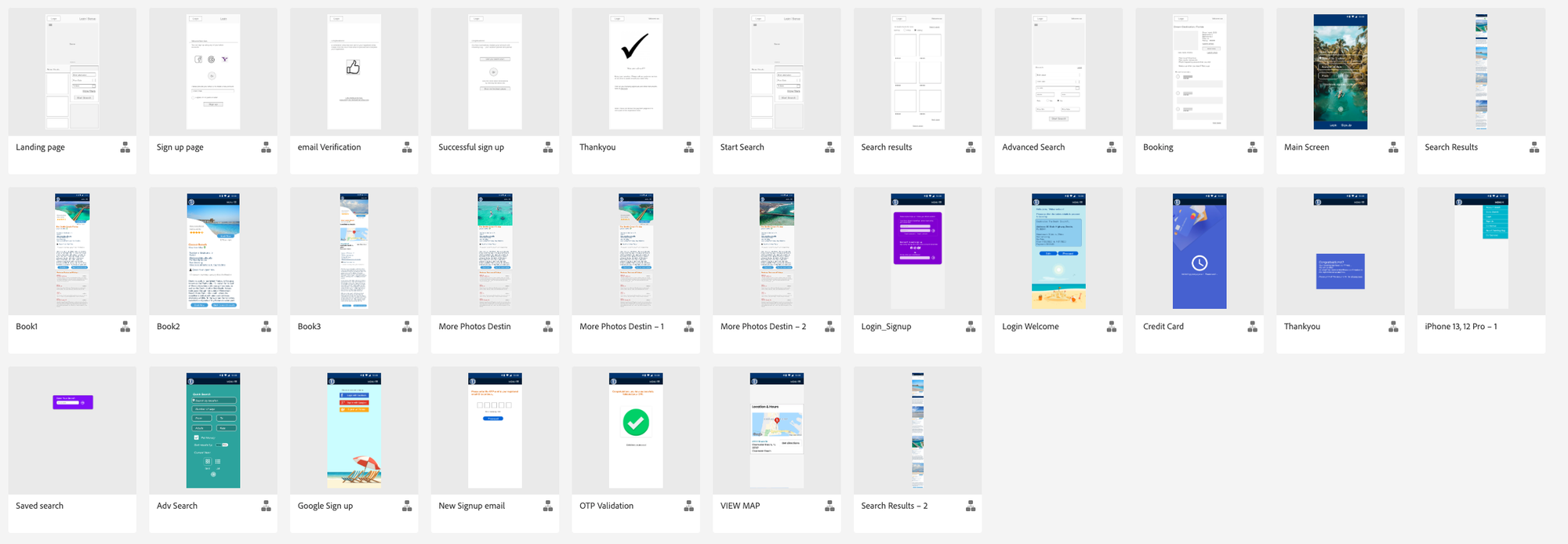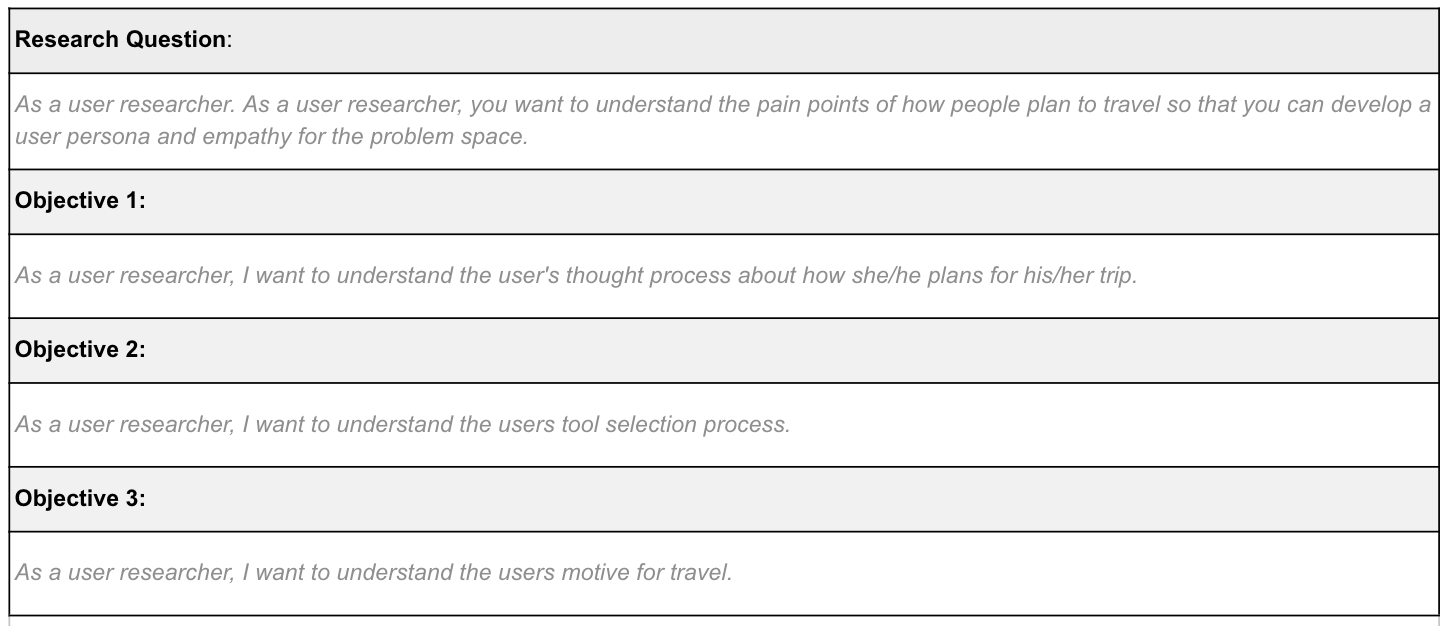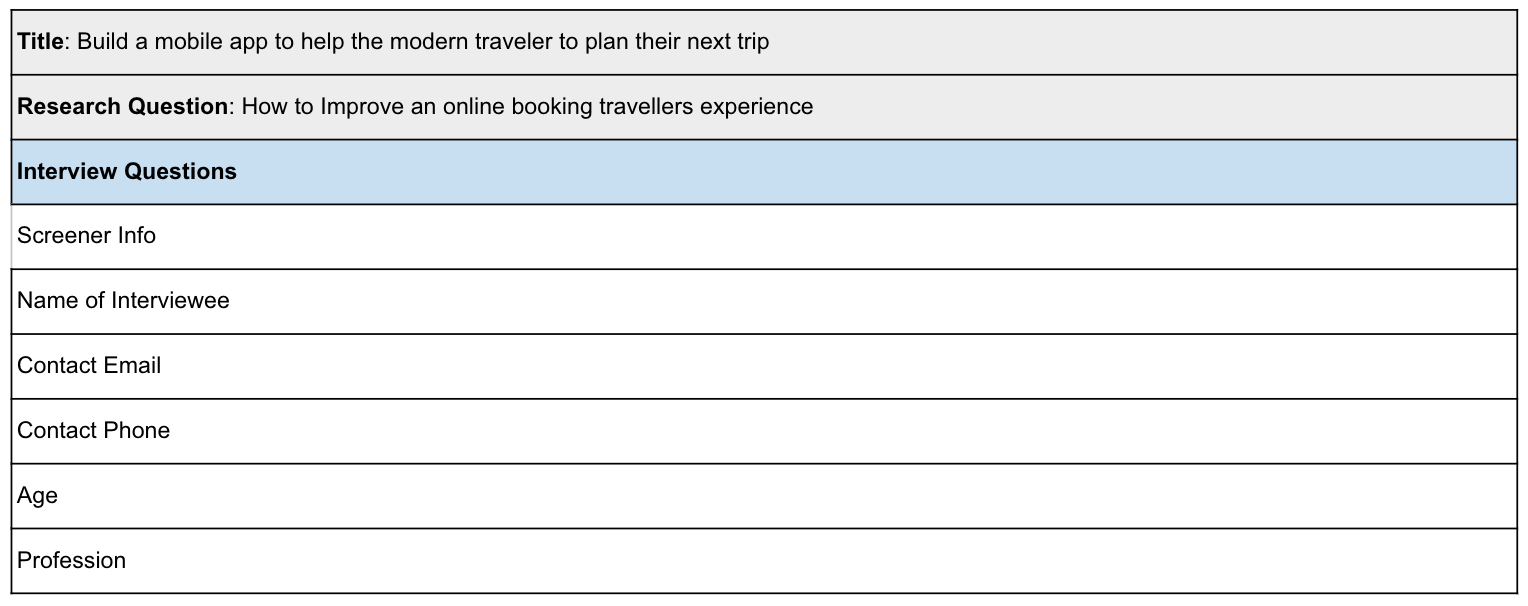Use Case: Field study to document existing challenges of a Travel website
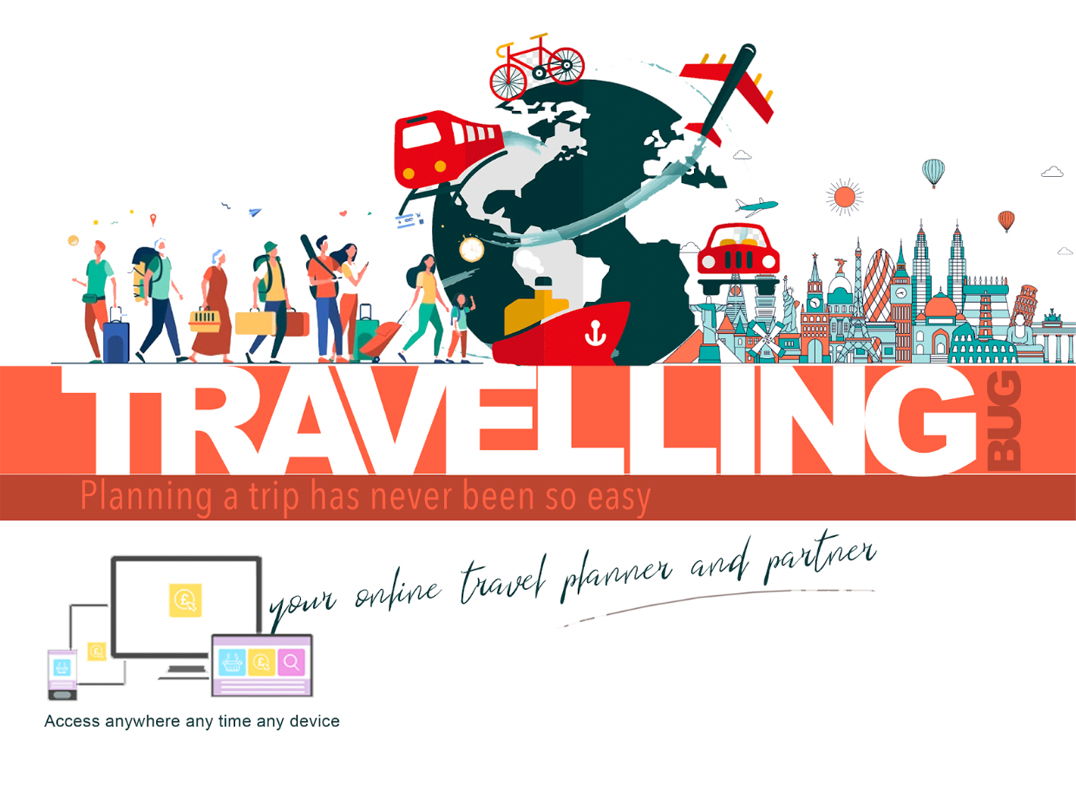
Overview and approach
In this UX case study, our primary aim is to elevate the user experience on a travel website. To achieve this objective, we embarked on an extensive journey of user research, delving deeply into users' preferences encompassing modes of transportation, travel choices, ideal travel timings, user demographics, budget considerations, competitor analysis, and the nuances of their booking preferences.
- User Interviews and Surveys:
- Conducted interviews and surveys with a diverse group of travelers to understand their preferences and pain points.
- Explored how users choose modes of transportation, budget considerations, and their age groups.
- Gathered insights on what types of trips they prefer (solo, family, group), what seasons they prefer to travel, and whether they book online or in-person.
- Analytics and Data Mining:
- Analyzed website data to determine which travel destinations were most popular.
- Examined the patterns of users' booking times and methods.
- Tracked popular modes of transportation on the website.
- Competitor Analysis:
- Researched and analyzed competitors in the online travel booking industry.
- Evaluated their strengths and weaknesses in terms of user experience, content, and services offered.
Key Findings:
- Modes of Transportation:
- Air travel was the most popular mode of transportation among users, followed by road trips and train journeys.
- Users appreciated clear and detailed information about each mode of transportation, including cost, duration, and convenience.
- User Choices:
- The majority of users preferred family trips (32%), followed by solo travel (25%) and group travel (22%).
- Users often chose destinations based on their interests, such as beach vacations, historical sites, or adventure tourism.
- Travel Timing:
- Summer was the most preferred time to travel (42%), followed by spring (25%) and winter (20%).
- Users' travel decisions were influenced by weather, school holidays, and specific cultural or seasonal events.
- User Demographics:
- The website primarily attracted users aged 25-34, making up 38% of the audience. Users aged 18-24 and 35-44 were also significant segments.
- Understanding the diverse age groups was vital for tailoring content and promotions.
- Budget Considerations:
- Many users had budget constraints, with 60% seeking cost-effective travel options.
- Clear pricing information, including discounts and package deals, was essential for user decision-making.
- Competitor Analysis:
- Identified strengths and weaknesses of key competitors, focusing on user-friendly interfaces, comprehensive content, and mobile accessibility.
- Competitor analysis informed strategies to improve the website's features and services.
- Booking Preferences:
- While the majority preferred online booking (78%) for convenience and discounts, a notable portion still preferred in-person booking (22%).
- Insights informed the need for a seamless and secure online booking process.
My Role
Research and provide insight on various Datapoints and KPIs
Proposed Solutions:
- Detailed Transportation Information:
- Enhance the transportation section with detailed information on various travel options, including cost, duration, and user reviews.
- Tailored Content and Recommendations:
- Customize content recommendations based on user preferences, age, and travel timing.
- Seasonal Promotions:
- Create seasonal promotions and content to attract users interested in traveling during different times of the year.
- User-Friendly Budget Tools:
- Develop budget calculators and tools to help users plan trips within their financial constraints.
- Competitive Features:
- Implement features that differentiate the website from competitors, such as unique travel guides and interactive travel planning tools.
- Online Booking Improvements:
- Streamline the online booking process to make it more user-friendly, secure, and mobile-responsive.
Conclusion: User research is instrumental in understanding traveler preferences, demographics, and needs. By incorporating these findings and implementing the proposed solutions, the travel website aims to enhance its user experience, making it more appealing to a diverse user base and strengthening its position in a competitive market.
Market Research and outcome:

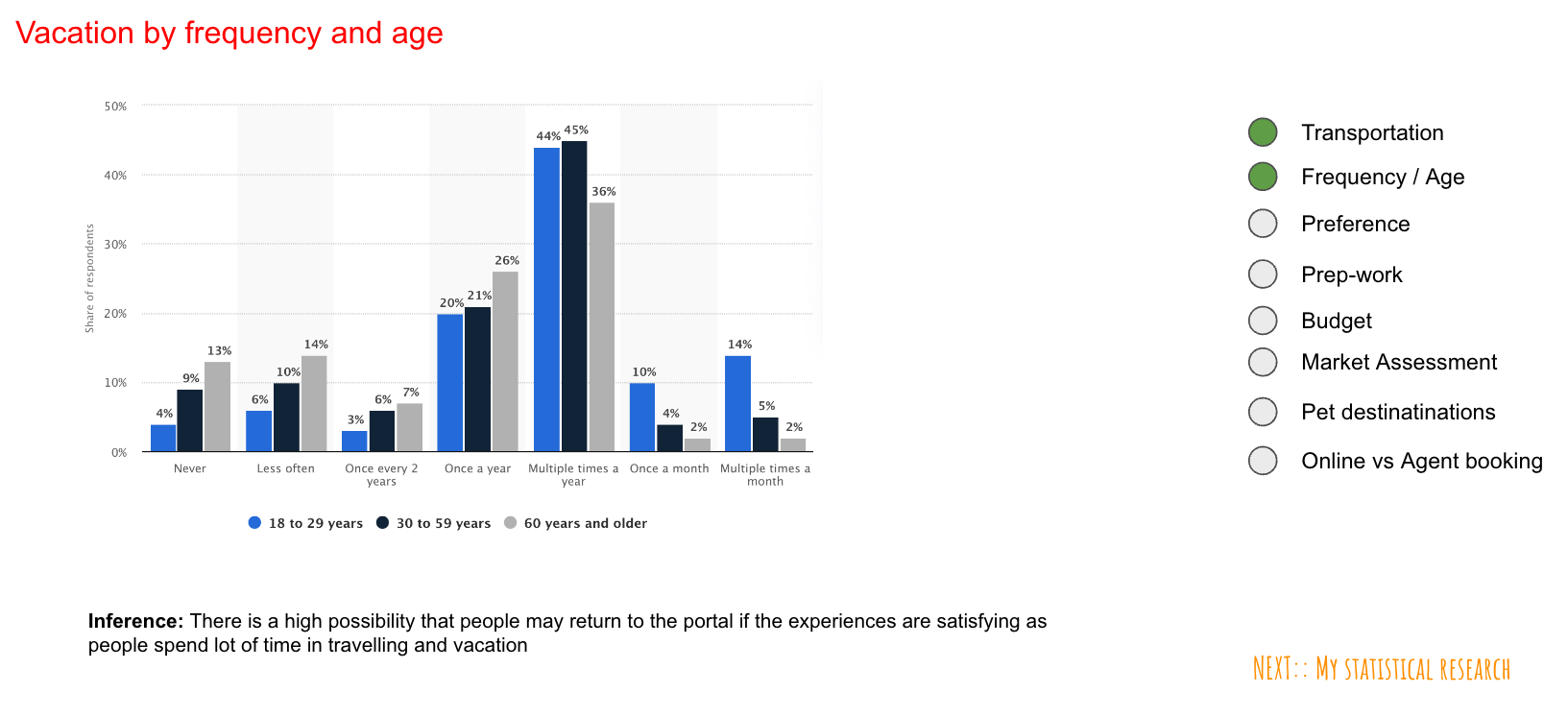
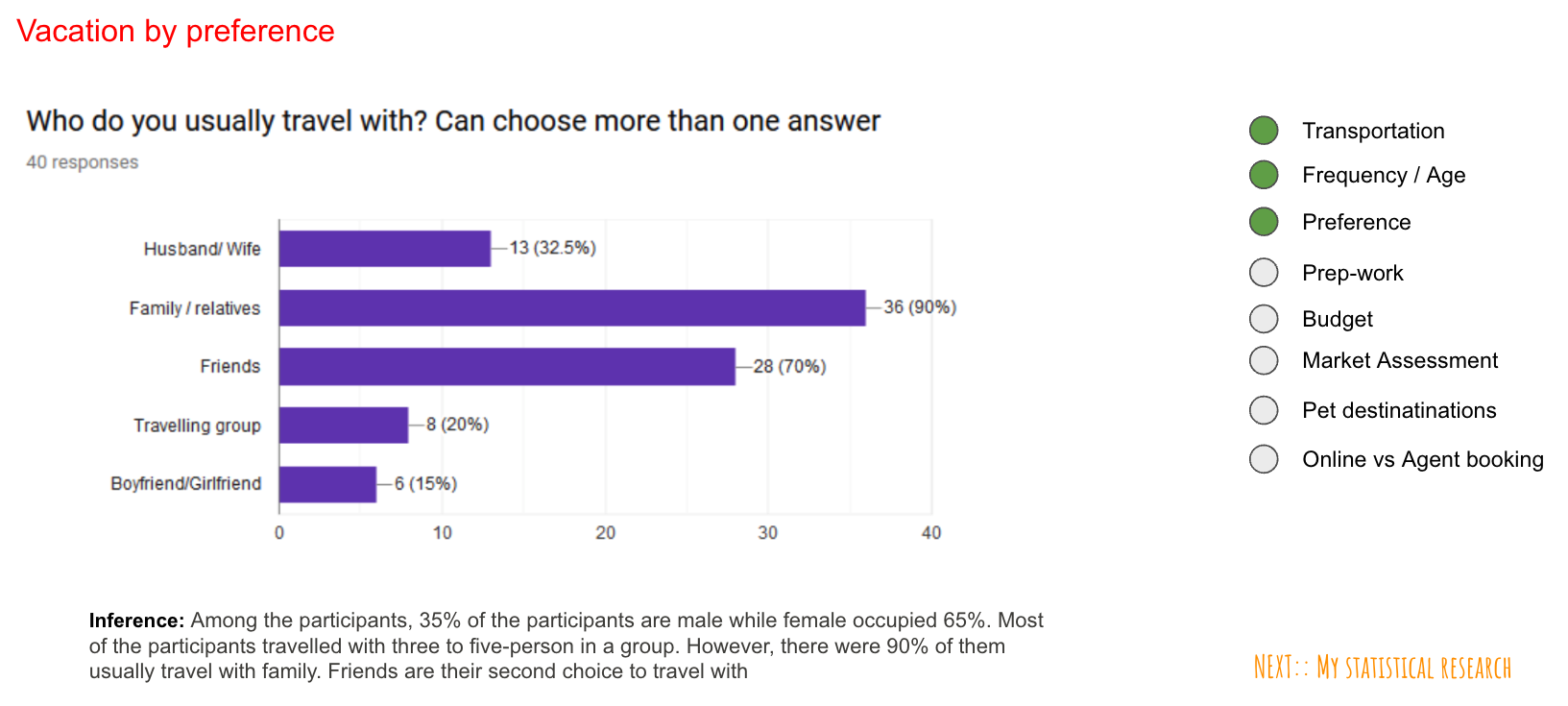
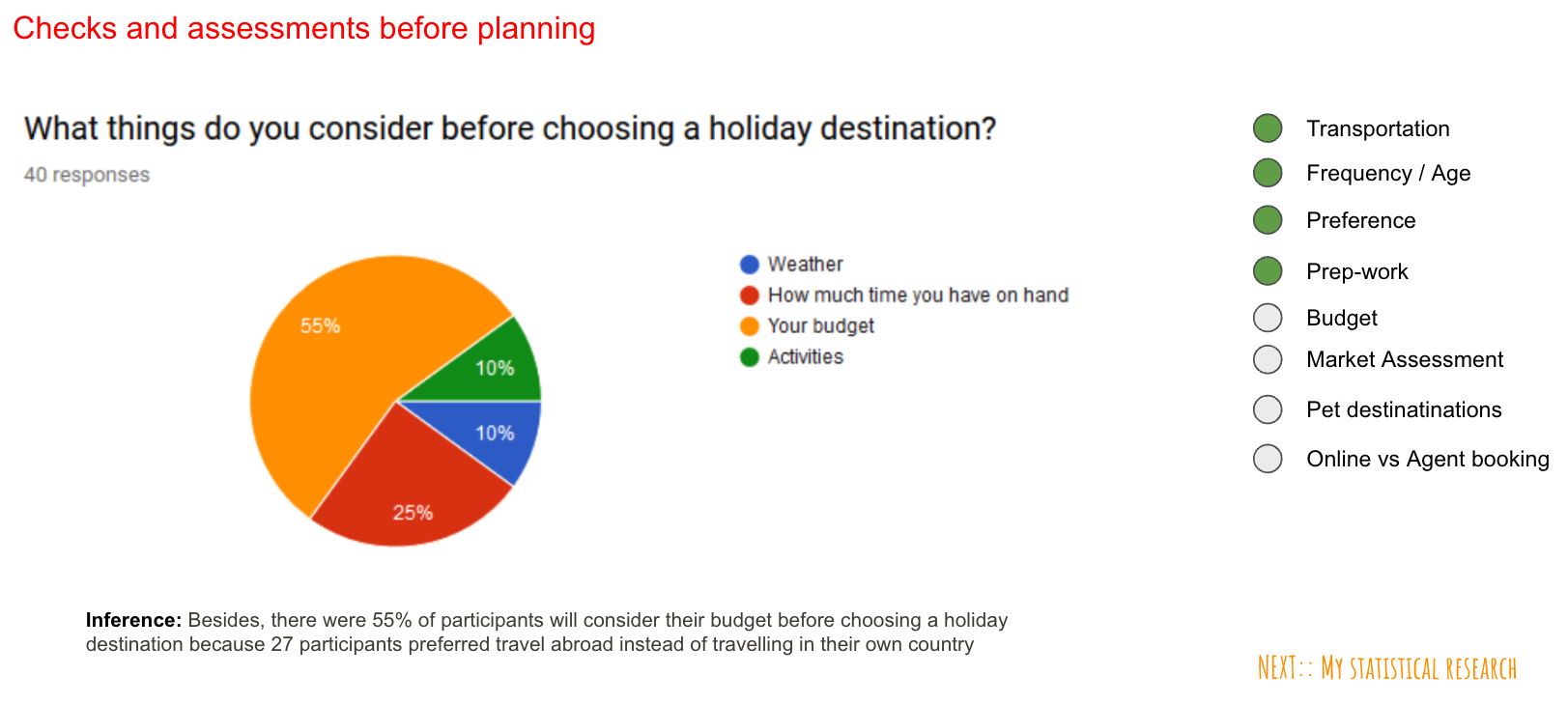
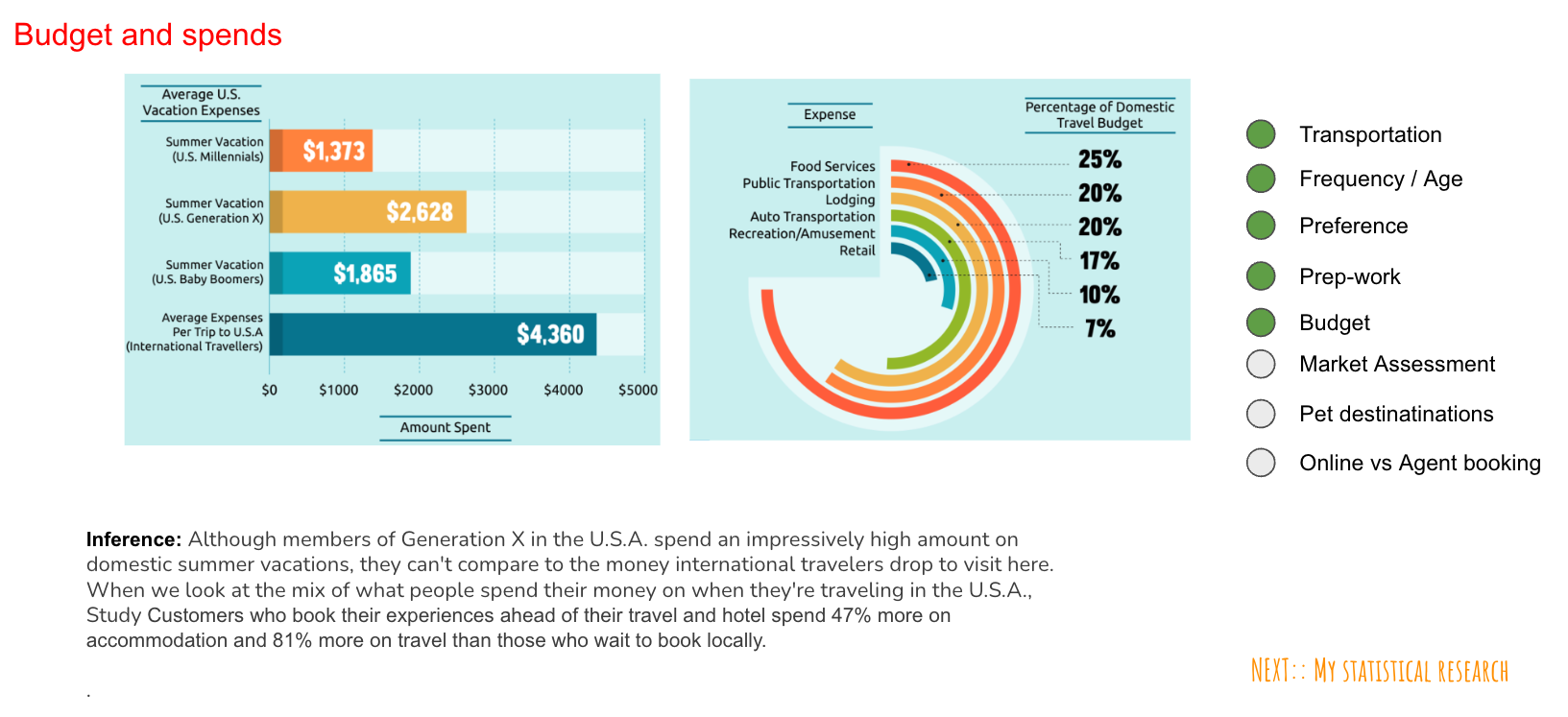
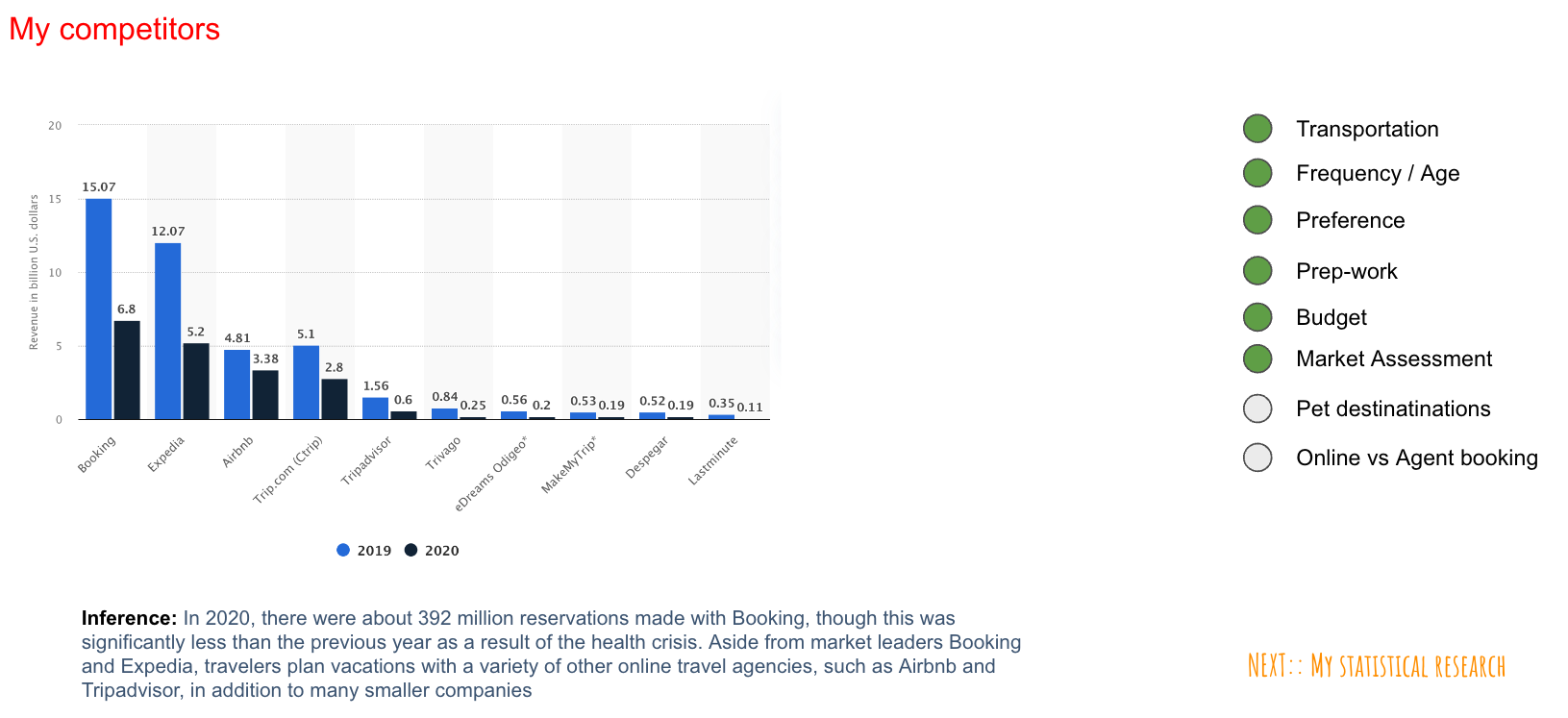
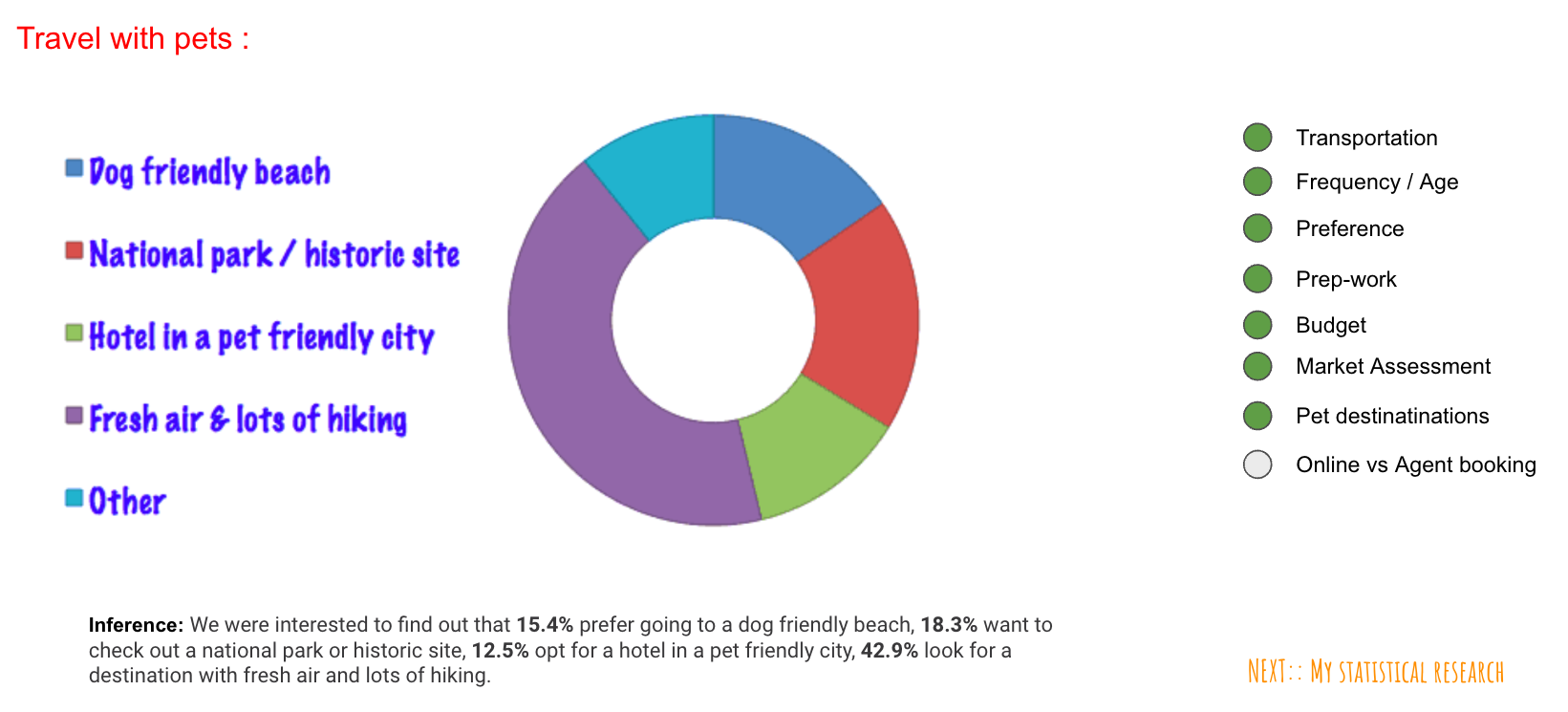
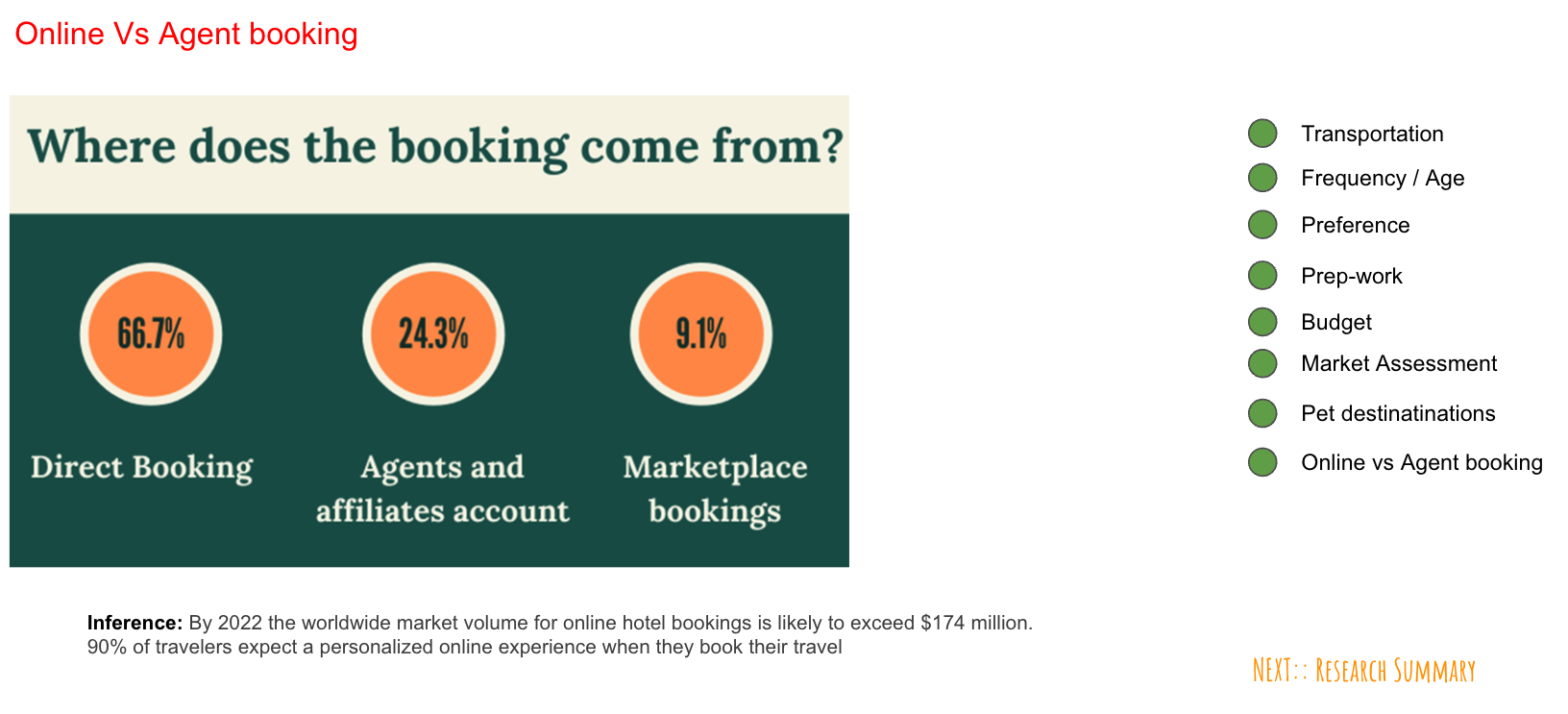
Research Summary
- Travel:
- Since travel by air is one of the most sought option by the users, our online portal should provide a well connected logistics, specials and support to improve the customer experience
- Age
- It has been observed that people of the age group of 30–60 seem to travel more and in greater frequency and hence the design should provide a support system to provide recreations to youngsters
- Extend informations on local parties and activities while supporting customers who need extended help and guidance.
- Budget
- Since most of the people have been observed to have expressed to work around the budget, it is important we highlight deals and discounts as one of the key features on our portal.
- Online booking
- People often prefer to book online for convenience compared to any other modes of payment and booking. It is important we have a secure gateway and transaction system in place to gain the trust and confidence of the visitors.
Proto Persona
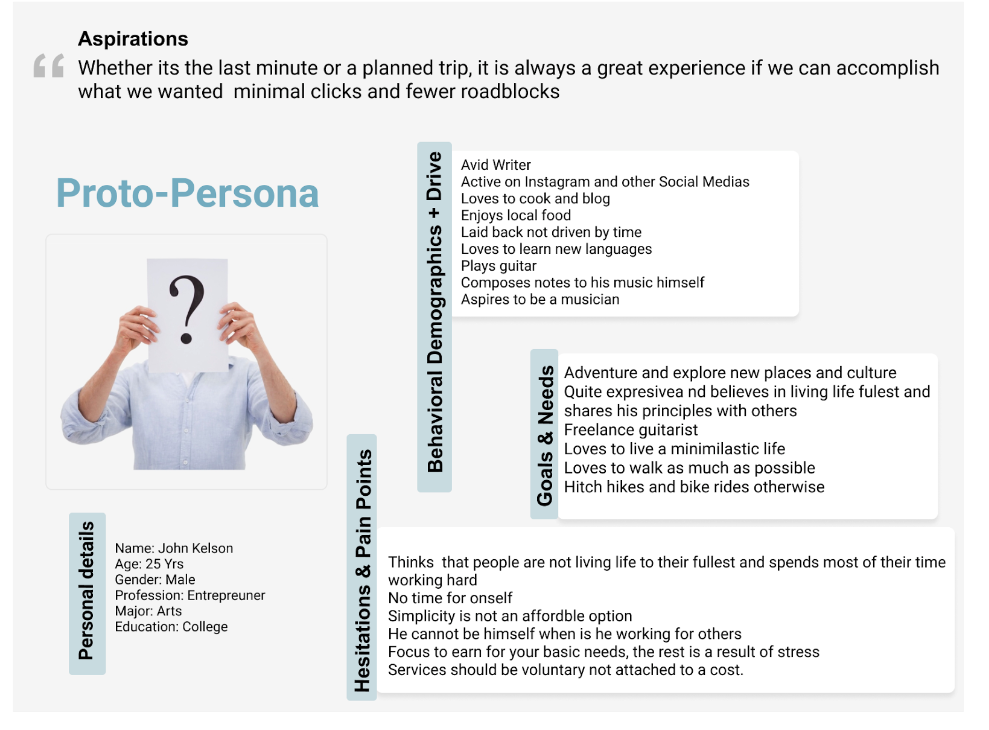
User Research Plan
Discussion Template
Research Summary
Setup Questions
Hi Interviewee I'm Kailas Pramodh and this is Vishal. We are conducting this study because we want to learn from people about Your travel Experiences, Key experiences and pain points while booking via an online portal. We are trying to build a an online portal that solves your pain points and improves your overall experience! You can help us the most by giving us honest feedback to our questions. This interview is being recorded and is totally anonymous. If you don't remember or don't simply know the answer to a question, please just say so. And again, thank you so much for helping us with this study. (Details click below)
https://docs.google.com/spreadsheets/d/14fhxTPG3ALV_78zT-Ter9JF120Fbo7lc/edit#gid=250660653
Affinity Notes
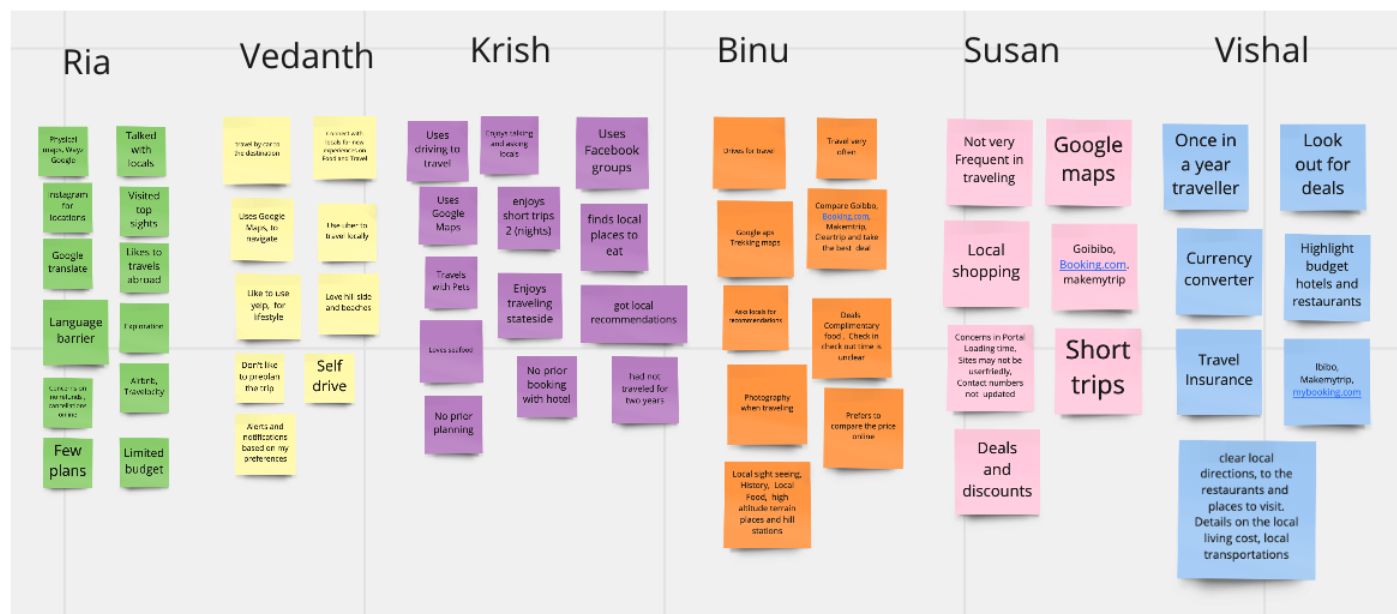
Affinity Diagram
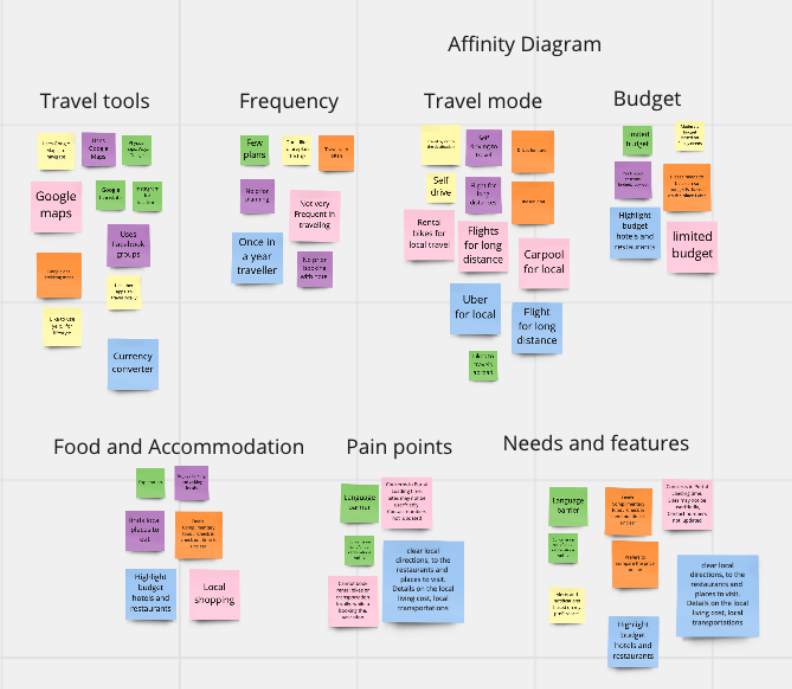
User Personas
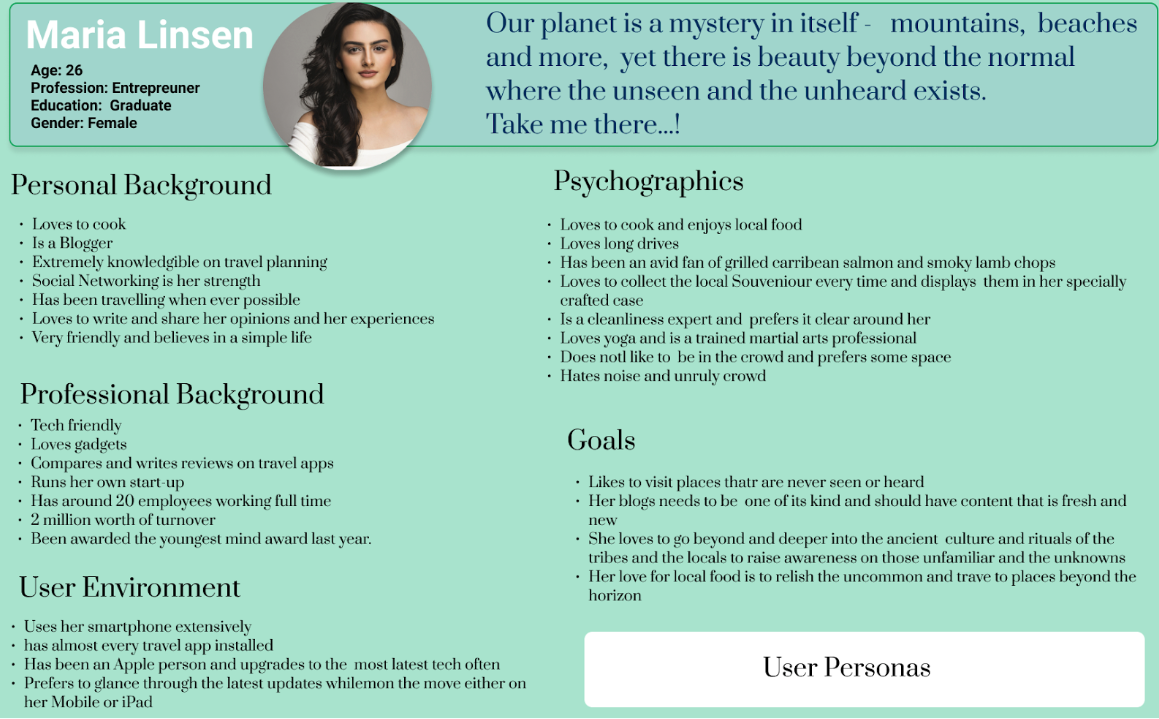
User Insights
Maria Linsen despite being an avid blogger and traveller needs help to find a portal that provides informations of destinations that are truly a miracle of this blue planet.
Based on my observations and research, I observed that most of the people need a vacation to break free but not an exceptional experience truly out of this world.
However, we are missing out on those users who are looking for something different and that truly makes such unique visitors revisit and user our website and use our services.
Problem Statement
The destination packages are framed and reviewed based on user comments and ratings. Fewer organizations go beyond the common man’s needs to support those exceptions.
Organization often fail to realise that such exceptions are the true needs of people and users revisit because of such thoughtful features and opportunities provided by only a few systems.
Feature matrix
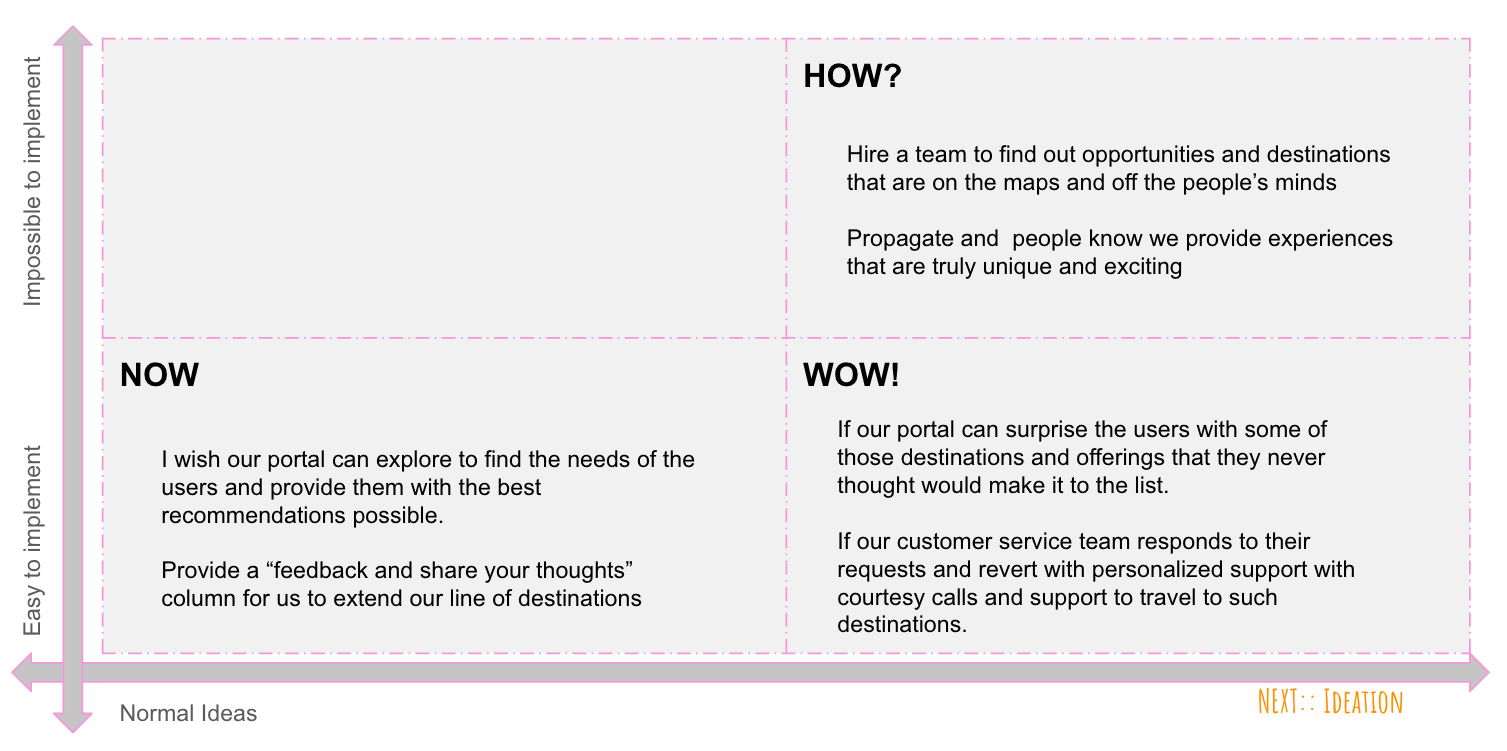
Ideation
I Like:
- I Like the way it provides a very clean and simple approach to book a destination
- I like the way we can book a vacation with minimal clicks
- I like the way they handle user personalisation based on our earlier experiences
I Wish:
- I wish the site had more unique destinations that are truly worth exploring
- I wish they would update their list of destinations and provide a link on the main page for returning customers
- I wish the specials and deals are sent to the registered customers well ahead of time
What if:
- I can provide a recommendation or a suggestion to include few of my favourite destinations and they could include them in their vacation list?
- What if I can save the search I have for my future references.
Value Proposition
Travelling Bug is a travel planner portal that not only allows users to plan a vacation but also lets user algorithms to customize and plan their next travel based on thor booking patterns.
This portal also lets you book local commute at the destination and provides full information on other local attractions and weather to let the customers experience the best of all weather and local travels.
User Scenario
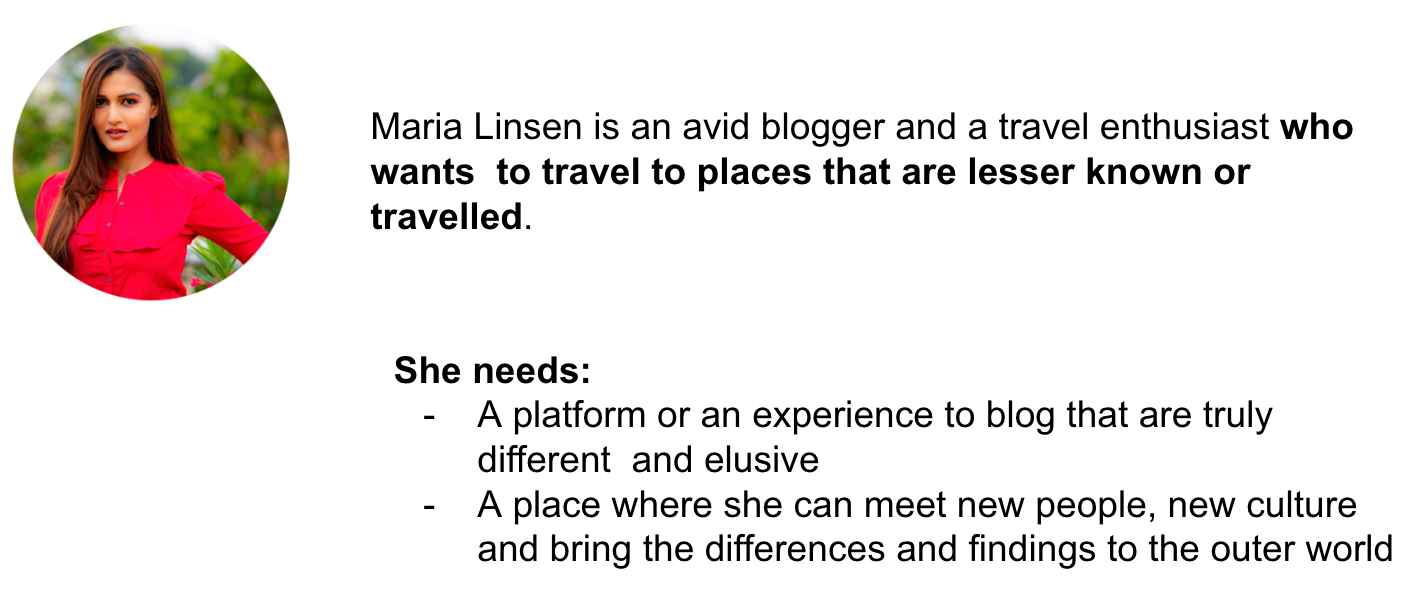
Storyboard

Detailed Storyboard click here (external link)
User Journey Map
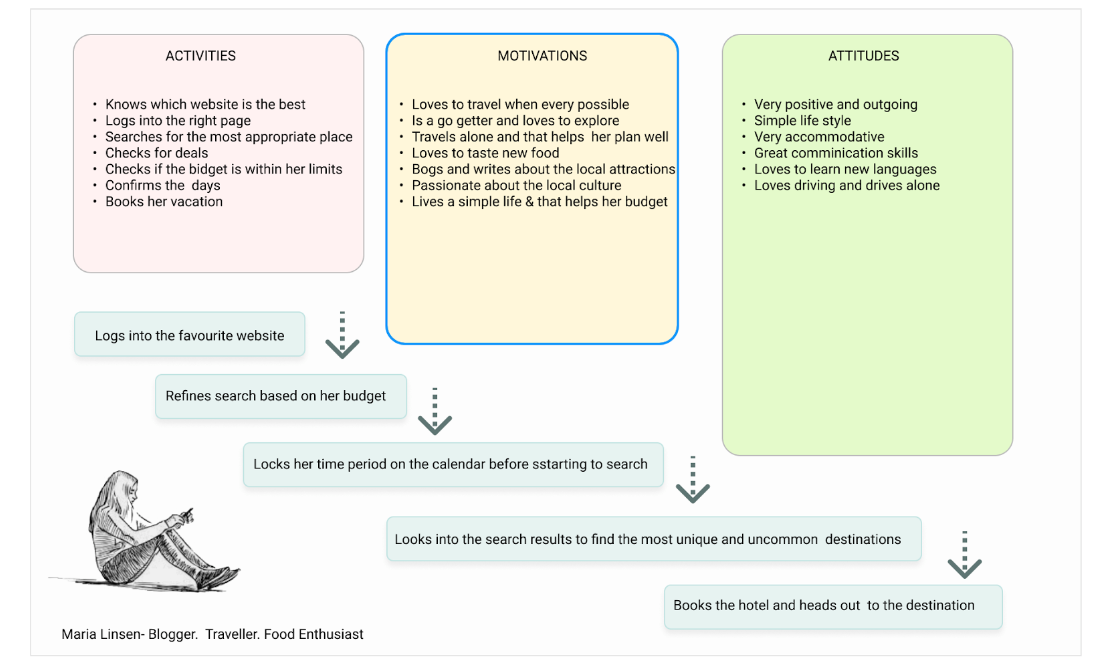 Detailed Storyboard click here (external link)
Detailed Storyboard click here (external link)
Competitor Analysis
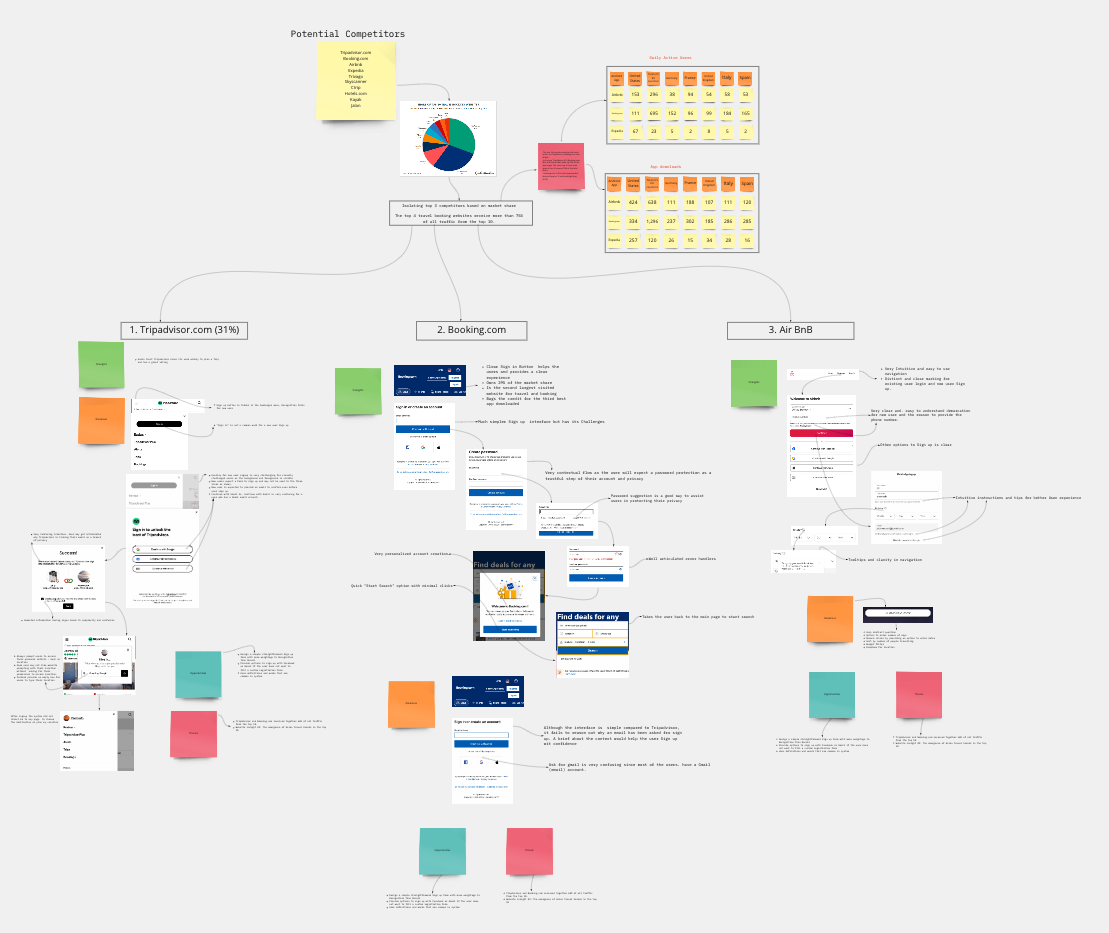
- An in-depth analysis of each of the identified competitors’ products
- Screenshots, along with annotations explaining the specifics of each feature/UX flow
- Feature list of each competitor’s platform/product
- Strengths and areas of improvement for each of the analyzed products
Detailed Storyboard click here (external link)
Competitor analysis matrix —a table that contains a column for features of a product and separate columns for each product

User Flow
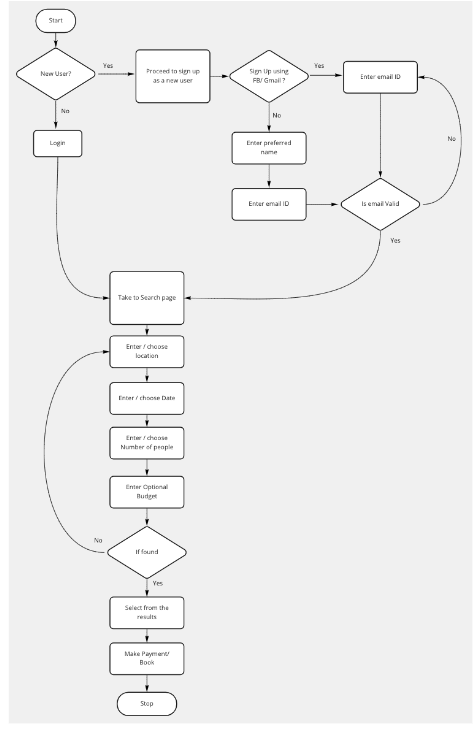
Paper sketch wireframes

Clickable Sketch Prototype using Invision (Externa; Link)
Digital wireframes
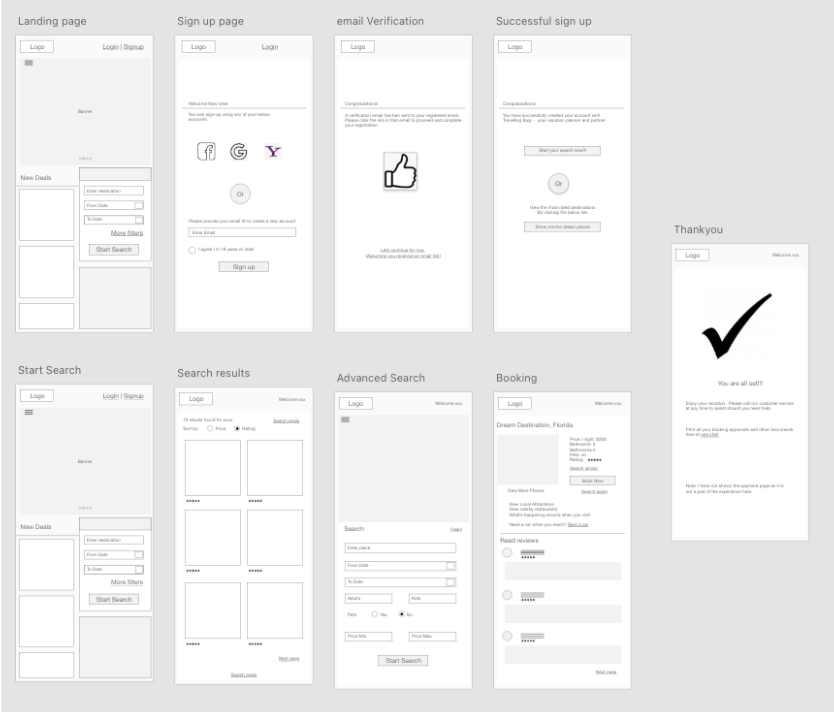
Clickable Prototype using Adobe XD
Guerrilla User Testing Plan

View test and results (External Link)
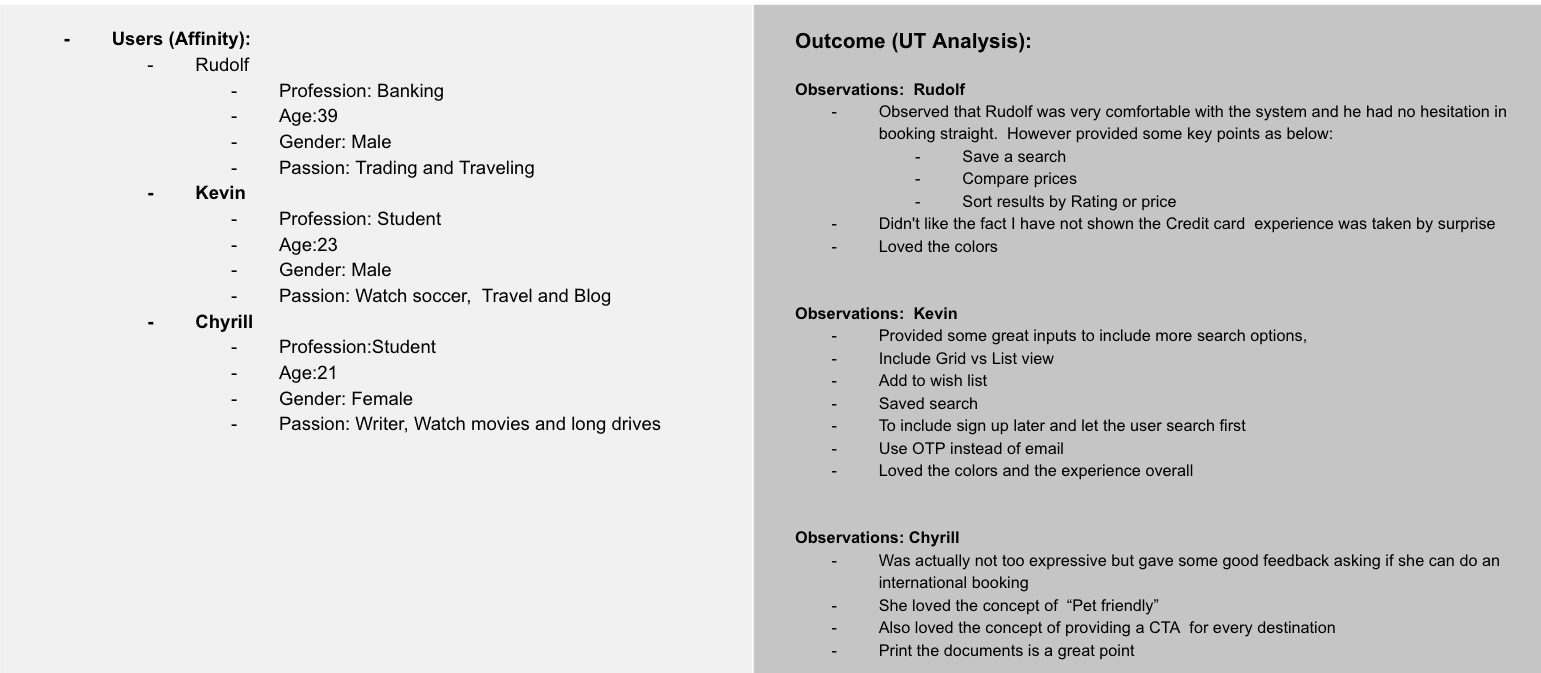
Affinity Diagrams

2X2 Priority Matrix
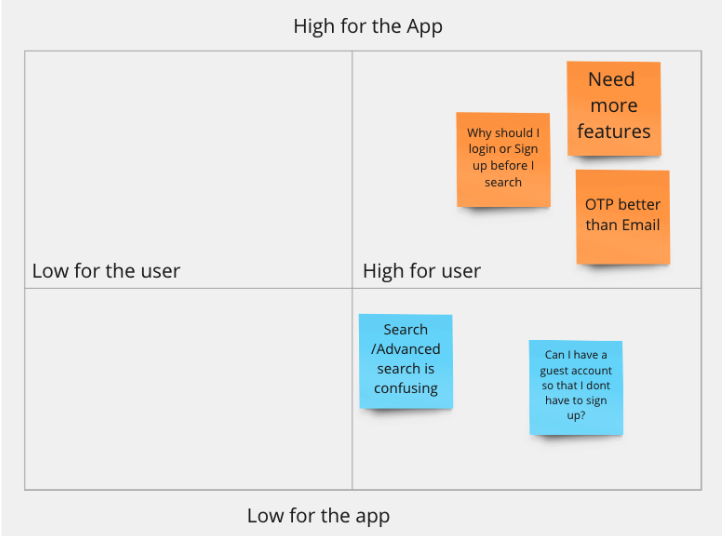
Final Wireframes High Fidelity Prototype Designs
